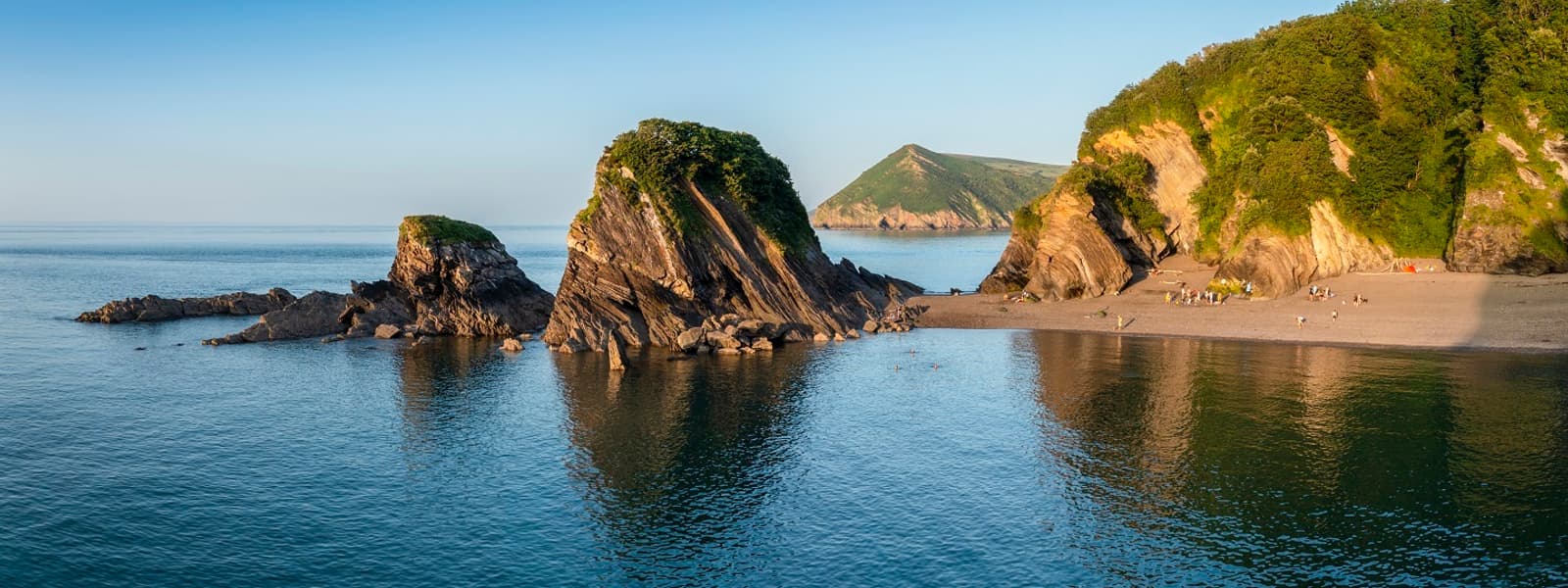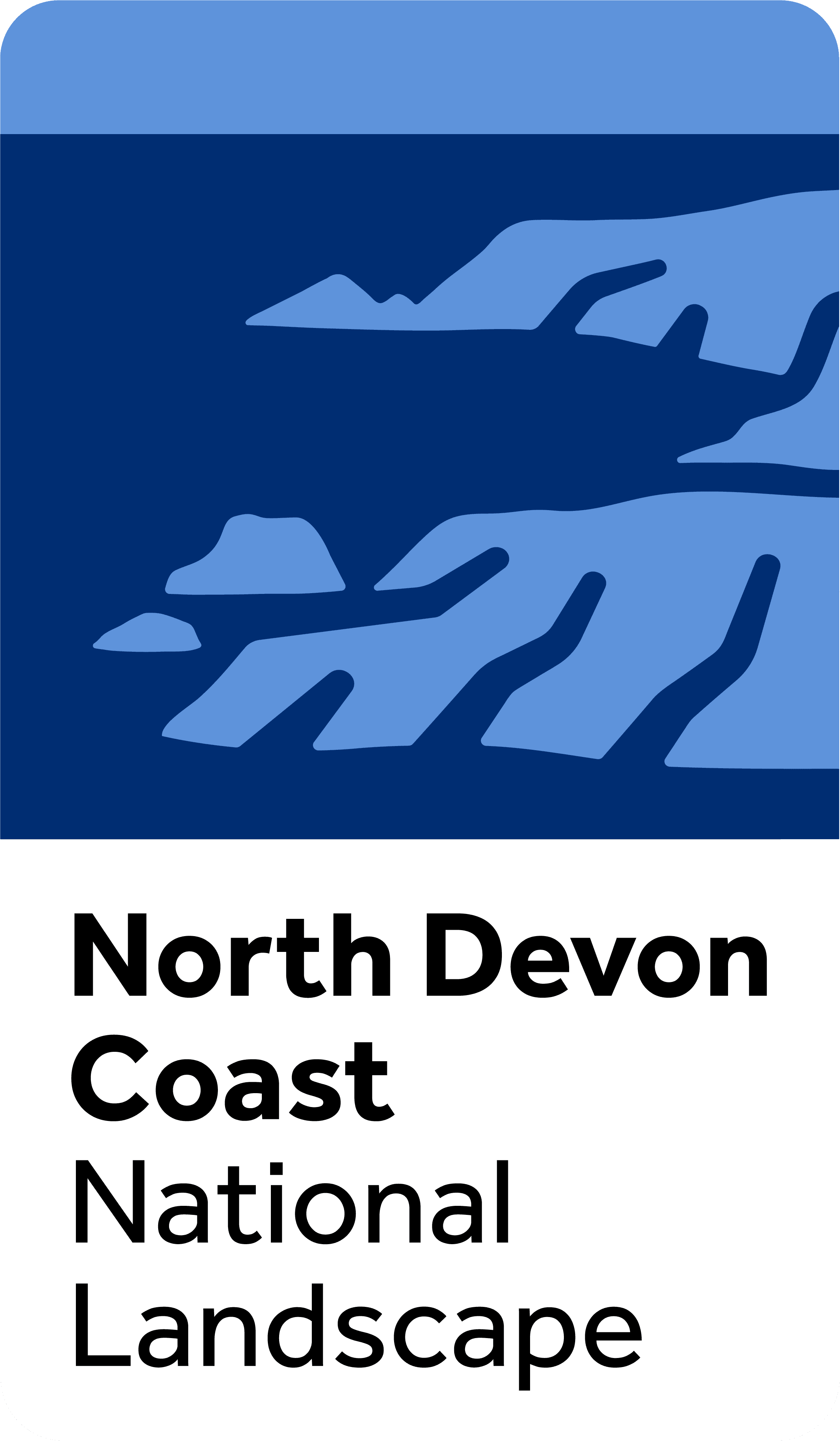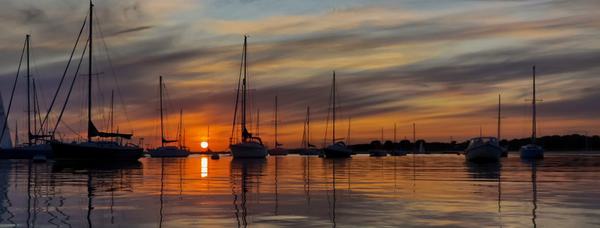North Devon Coast National Landscape
The North Devon Coast National Landscape covers 171 square kilometres (66 square miles) of mainly coastal landscape including special places such as Combe Martin, Lee Bay, Woolacombe, Croyde, Saunton, Northam Burrows Country Park, Westward Ho!’s Pebble Ridge, the Hartland Peninsula and the dunes of Braunton Burrows, with their rare flora such as marsh orchids, are internationally designated as the core of a UNESCO Biosphere. The National Landscape is also home to the UKs first World Surfing Reserve.
Two studies of landscape characteristics in the North Devon Coast National Landscape have identified 14 special qualities to define “some of the finest coastal scenery in the country”, the reason for its designation in 1960. The remote cliffs and cliff-top grasslands are important ecological sites, with many Sites of Special Scientific Interest.
In the north, steeply dipping rocks form hogsback cliffs in a natural continuation of Exmoor’s coastline. Turning south, Hartland Point’s dark, sheer crags and razor-like reefs are the coast at its sternest. The National Landscape also reaches inland to take in the cliff top plateau around Hartland. This is scored by deep valleys which reach the coast as steep hanging gaps in the cliffs, often foaming with spectacular coastal waterfalls. In contrast, the middle of the National Landscape includes the broad sweep of Barnstaple Bay, the surfing beaches of Woolacombe, Croyde, Saunton and Westward Ho! and the huge dune systems of Braunton Burrows on the Taw and Torridge Estuary. Although skirting larger resorts such as Ilfracombe, the National Landscape boundary takes in picturesque fishing hamlets, including tiny ‘honey pot’ Clovelly.
The National Landscape is heavily used both for traditional family holidays, coach excursions and water sports, particularly surfing and windsurfing. The South-West Coast Path, a National Trail, has opened up the high cliff tops for walkers and naturalists.
So much to enjoy within the North Devon Coast National Landscape: rugged cliffs capped by Iron Age hill forts; twisted and folded rocks carved by the sea over millions of years; internationally renowned sand dunes with World War 2 remains; plethora of rare wildlife’ sheltered harbours and fishing villages; oak woodlands; estuary teeming with birdlife; ancient burial mounds; hamlets, farms and fields steeped in history.





